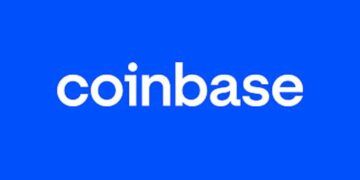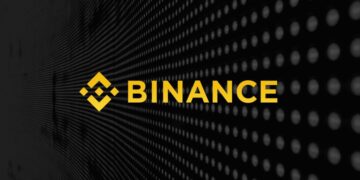Companies are seeing better adoption of agentic AI, enhancing their capacity to ship better worth on the pace of want by leveraging digital labor throughout all strains of enterprise.
In response to the 2025 Connectivity Benchmark Report by MuleSoft and Deloitte Digital, 93% of IT leaders report intentions to introduce autonomous AI brokers inside the subsequent two years, and practically half have already executed so.
MuleSoft’s tenth annual Connectivity Benchmark Report relies on survey information from interviews with 1,050 IT leaders throughout the globe. Right here is the manager abstract:
- Information is trapped throughout siloed enterprise apps: The typical variety of apps utilized by respondents is 897, with 45% reporting utilizing 1,000 purposes or extra — additional hindering IT groups’ capacity to construct a unified expertise. Solely 29% of enterprise apps are built-in and share info throughout the enterprise.
- IT workload is rising: With IT leaders being pushed to include AI, 86% of respondents anticipate their groups’ workload will rise within the subsequent yr, all whereas nonetheless sustaining current programs, together with 70% who report governing enterprise-wide automations.
- Built-in person expertise is elusive: Enterprise-wide automation is on the rise; even so, 66% of respondents nonetheless do not present an built-in person expertise throughout their channels.
- Integration is a problem for accelerated adoption of AI brokers: Almost all (95%) of IT leaders report 95% integration as a hurdle to implementing AI successfully, however APIs have helped. Fifty-five % of IT leaders report APIs enhance their IT infrastructure, whereas 45% acknowledge the flexibility for APIs to assist enhancing person experiences.
Listed below are my high 20 huge takeaways that each CIO and IT chief should overview and self-assess from the report:
AI adoption surpass projections
- Adoption of autonomous brokers is a key enterprise precedence: Introducing autonomous brokers inside the subsequent two years is on the roadmap for 93% of IT leaders; practically half have already executed so.
- Productiveness good points drive agent adoption: The overwhelming majority (93%) really feel that AI will improve developer productiveness over the subsequent three years, which is up seven proportion factors since final yr’s report.
- Extra AI fashions might be deployed to drive agent adoption: The typical variety of AI fashions estimated for use doubled from 2024 (9 to 18), and IT leaders predict an extra improve of 78% within the subsequent three years to a median of 32 fashions.
- IT budgets are rising in 2025: As demand for AI grows, so does the price range: 85% of IT decision-makers count on a rise of their general price range in 2025, whereas 11% anticipate that their IT budgets will keep the identical.
- Investments in information infrastructure are 4X AI investments: To arrange for the expanded use of AI, enterprise CIOs are allocating 25% of their budgets to information infrastructure and administration (in comparison with 5% to AI).
- IT workload will improve considerably in 2025: Together with an elevated price range, 86% of IT leaders anticipate workloads to rise as effectively. On common, they count on an 18% improve within the variety of tasks their group might want to ship. To fulfill this rising demand, IT staffing budgets are additionally set to rise considerably, with an anticipated improve of 61.9% in comparison with final yr’s predicted quantity, with an estimated price range nearing $17M ($16.91M).
- Undertaking supply capabilities will decline because of greater demand from IT: The proportion of tasks not being delivered on time has risen to 29% from 26% final yr. Can AI assist? That is one space through which IT leaders are extremely optimistic about AI’s potential to spice up productiveness, with 93% anticipating it to reinforce developer productiveness over the subsequent three years, up from 85% in final yr’s survey.
- The first impediment to AI implementation — integration and legacy debt: Integration stays essentially the most vital barrier to AI implementation, with 95% of organizations dealing with challenges when integrating AI into their current processes. Cybersecurity and information privateness are paramount considerations for IT leaders throughout AI integration.
Disconnected information strains IT assets
- Disconnected information stays an awesome blocker to legacy modernization for almost all of organizations: Right now, 83% of organizations report that integration challenges are a big barrier to their legacy modernization efforts. And 97% of IT leaders acknowledge that their organizations battle with integrating end-user experiences.
- Consumer expertise throughout all channels is just not managed: Round two-thirds (66%) of respondents do not present an built-in person expertise throughout all of their channels.Integration challenges forestall optimum person experiences — Integration challenges are hindering digital transformation at their group for 83% of respondents.
- Connections are key to improved experiences: Round half (49%) report improved return on funding when making a linked end-user expertise.
- The highest challenges to offering a seamless buyer expertise are: 1. adopting AI instruments (44%), 2. reusing software program parts to create new services and products (42%), 3. leveraging APIs (37%), 4. implementing microservice structure (36%), and 5. adopting event-driven APIs (35%).
Rising demand for AI brokers gas the necessity for strong integration
- The variety of apps within the enterprise is rising: Organizations are leveraging a staggering variety of purposes, with a median of 897. Remarkably, 46% of those organizations report utilizing 1,000 purposes or extra. Concerningly, solely 2% of IT leaders report their organizations have built-in greater than half of their purposes.
- Buyer experiences are principally digital: With an estimated 71% of all buyer engagements occurring in a digital format, the necessity for software integration is vital to success.
- Information silos are innovation roadblocks: Solely 10% of respondents report experiencing no challenges because of information silos, whereas 74% of organizations discover their IT programs to be overly interdependent.
- Information mobility is the largest integration problem: Shifting information from supply programs to the info warehouse is the highest problem, adopted by correlating information within the warehouse to ship insights and reusing information sources throughout totally different user-facing purposes.
- IT sees a rising want for integration throughout all departments: In response to IT leaders, at the very least 80% or extra of knowledge science, engineering, gross sales, and customer support departments are reporting a necessity for integration.
- IT groups face new hurdle with widespread AI: A overwhelming majority (81%) of IT leaders report that their corporations are grappling with challenges in leveraging AI for system integrations. The typical software lifetime inside organizations is 5 years, highlighting the necessity for strong and adaptable programs that may combine new applied sciences — with out compromising efficiency or safety.
- AI wants information to ship outcomes: With out integration, AI doesn’t have entry to the essential information for it to operate at its finest. Eighty-one % of respondents recognized information integration as some of the vital challenges their organizations face when implementing AI for programs integrations. Outdated infrastructure is a big impediment, with 41% of individuals reporting that their group’s outdated IT structure and infrastructure hinder the usage of information for AI purposes.
The 2025 Connectivity Benchmark Report additionally highlighted the significance of automation, with central IT groups governing 70% of automation. A well-rounded automation technique is taken into account important for successfully integrating AI into a company.
Automation can broaden past IT supply groups — 65% of organizations have developed an entire or practically full technique to empower non-technical customers with low-code and no-code options. The demand for automation is abundantly clear, with 98% of IT leaders highlighting their want for automation inside their group.
To be taught extra concerning the 2025 Connectivity Benchmark Report, you may go to right here.












![Why Ethereum [ETH] address outflows may be headed for DeFi](https://cryptonoiz.com/wp-content/uploads/2023/03/AMBCrypto_An_image_of_a_stylized_Ethereum_logo_with_arrows_poin_22f2aeff-c7bb-4c7d-aec7-547a37a35e82-1-1000x600-360x180.jpg)





























